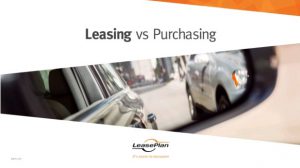Fuel price volatility is the biggest challenge facing fleet managers today, according to research conducted by LeasePlan.
Whether they’re running a handful of vans or several hundred vehicles, our survey found that managers up and down the country share the same concerns over the fluctuating cost of fuel.
Other key challenges for larger fleets include driver safety and productivity, with 39% of respondents listing this area as a major consideration. A third said that reducing emissions and implementing greener fleet initiatives presented another significant hurdle.
Our research also revealed that, regardless of the size of fleet, finding ways to better manage costs was a pressing priority.
The aim of the survey was to gain even more insight into the needs of today’s fleet decision makers. Working with SMEs to Public Sector bodies and large corporations for over 50 years has taught us that every business is different – and has different motivations for leasing.
We carried out this research in order to get a greater understanding of the busy people we work with every day – and to discover ways in which we could help take the stress and burden of vehicle-related admin away.
Driver safety
 Driver safety came in close behind fuel prices and cost management as the third biggest issue – and the bigger the fleet size, the more important driver safety and driver productivity became.
Driver safety came in close behind fuel prices and cost management as the third biggest issue – and the bigger the fleet size, the more important driver safety and driver productivity became.
Using LeasePlan’s telematics system you’ll know where your vehicles are right now, who’s driving it and how much fuel it’s using. The data also helps you spot and rein in bad driving habits, improve safety and save fuel (up to 10% on average).
Environmental impact

Larger fleets place the environmental impact of fleet higher up the agenda – and with fleet decision makers now needing to report, manage and control C02 emissions, it’s an issue that’s growing ever more important.
For the biggest fleets surveyed (those running over 350 vehicles), reducing emissions and implementing greener fleet initiatives was cited as a significant challenge (33%).
Turning to Ultra Low Emission Vehicles could be the answer. Emitting less than 75g of CO2 per kilometre, ULEVs are a perfect fit for a company looking to reduce the emissions of its fleet.
Business Critical Fleets
It goes without saying that for medium-sized fleets operating Business Critical vehicles it’s essential that their vehicles spend as much time as possible on the road – and increasing driver productivity was listed as the second biggest challenge for this sector.
Latest technology delivering valuable data means services, inspections and other scheduled maintenance can be planned around working patterns. It means you’re assured of the maximum possible uptime for every vehicle.
What Customers want
The results in our survey from those managing small, medium and large fleets revealed each had different priorities when it came to what they wanted from a leasing provider.
Small fleets:
1. Price
2. Aftersales support
3. Maintenance
4. Simple contracts
Medium-sized fleets:
1. Price
2. Maintenance
3. 24/7 support
4. Ability to change vehicles
Large fleets:
1. Price
2. Maintenance
3. 24/7 support
4. Aftersales support
Lease or buy?

For an organisation of any size looking to acquire cars or vans, the question that has to be asked is whether to lease or buy.
For anyone familiar with leasing, the answer is a fairly straightforward one given the numerous benefits you get with leasing – which many organisations just aren’t aware of.
When you buy vehicles for your fleet, you’re tying up large sums of cash that could be put to better use elsewhere. Leasing customers tell us they take comfort in the fact that they’ve removed their exposure to depreciation.
Building maintenance into the contracts also makes for easier budgeting through predictable monthly costs – as well as removing the worry of unexpected maintenance bills.
In fact, our research revealed the main reasons for choosing to lease:
1.Decision makers running smaller fleets like the ability to change vehicles easily – with 42% of small businesses stating this was an important consideration.
2. For more than a third of respondents across all fleet sizes, financial considerations from cash flow to balance sheets are an important factor when choosing to lease.
3. For all fleet segments the simplicity offered by leasing, both in life and at the end of the lease, was an important factor in choosing to lease.
Getting outside expertise in
Our research revealed that Fleet Managers today come from a variety of backgrounds, including HR, Procurement and Finance, as well as from traditional Transport teams. Within smaller organisations the role of fleet manager generally sits with the business owner.
However, with increasing demands on anyone operating a fleet – whether it’s health and safety, compliance, environmental impact or cost reduction – it can soon become overwhelming.
It’s why the case for bringing in outside expertise when it comes to fleet management has never been stronger.
Choosing the right provider for your business
When selecting a new leasing provider, our research revealed that choice is not all based on price.
For smaller business, the bottom line does take top priority – 70% of small businesses said that price was the deciding factor compared to 58% of those in the medium and large bracket.
Beyond price, customers want clarity from their leasing provider – straightforward contracts that are easy to understand and offer reassurance, not only in the services they are signing up to, but in the relationships they are building with their leasing provider.
Having a dedicated relationship manager is considered more important for those operating medium and larger fleets, with 36% saying this was a crucial factor.
Creating this strong, long-standing relationship ensures you get the support you need in regards to your fleet.
The importance of additional services

Over half of companies across the three segments said having maintenance included in their fleet contract was essential and identified this as the most important service, followed by replacement vehicles.
Fuel management was deemed to be less important for decision makers in the smaller fleet category, despite being their number one challenge.
Roadside assistance was seen as more important for smaller fleet decision makers than the other segments.
The benefits that come with leasing
So, what are the hidden benefits of leasing vehicles for your business, rather than buying them?
• Control – You benefit from fixed monthly rental costs based on the duration of your contract and estimated annual mileage
• Tailored – The financial details are structured according to your requirements.
• Relationship – Your implementation manager will look after the transition to account management, who will then work with you to deliver savings going forward.
• Flexibility – Contract extensions and early termination give you the flexibility to deal with anything unexpected.
• Visibility – Reporting allows you to see actual versus planned mileage for each vehicle and make appropriate updates to vehicle schedules.
• Protection – Accident management means you keep your drivers on the road in the event of any mishaps and reduce downtime.
• Support – Relief vehicles, which can be built into the contract, ready and waiting in the event of an accident, breakdown or theft.
To discuss any of the issues covered in this article, please speak to your LeasePlan Account Manager or contact a member of the LeasePlan New Business team on:
Tel: 01753 802 098
Email: newbusiness@leaseplan.co.uk
You may also be interested in…
New to leasing? Learn more about the benefits in our Slideshare





